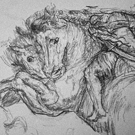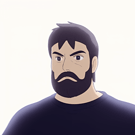I’m not that familiar with rbfx either, but it seemed
@Egorbo
was warming up to it due to the complexities the SDL updates added to his methodology for creating the current version of Urhosharp, if he upgrades the fork of Urho3D to use the latest SDL updates.
But anyway, looking forward to trying out your urhosharp editor.
One of the issues I had running urhosharp on a hololens was when loading scene files urhosharp fails. For instance on the PBRMaterials scene, I had to manually edit the scene file to comment out the initial scene and just load the nodes.
Taking a look at one of
@Egorbo
's samples where it looks like he used the editor, he has two scene files.
The first wraps all the nodes in a scene, the second file just has nodes.
That scene file is the one loaded by stereo applications,
as shown here.
Pointing this out because if the editor handled that (maybe it does already), it would be a nice feature to be able to export the scene and not have to manually modify it for a stereo application.
He also still loads it to the scene, and I load it to a child using code like this:
node.LoadXml("Data/Scenes/PBRHoloExample.xml");
I learned about rbfx from this thread
.




 (out of topic) Is there any source for rapid learning about designing materials ?
(out of topic) Is there any source for rapid learning about designing materials ?
